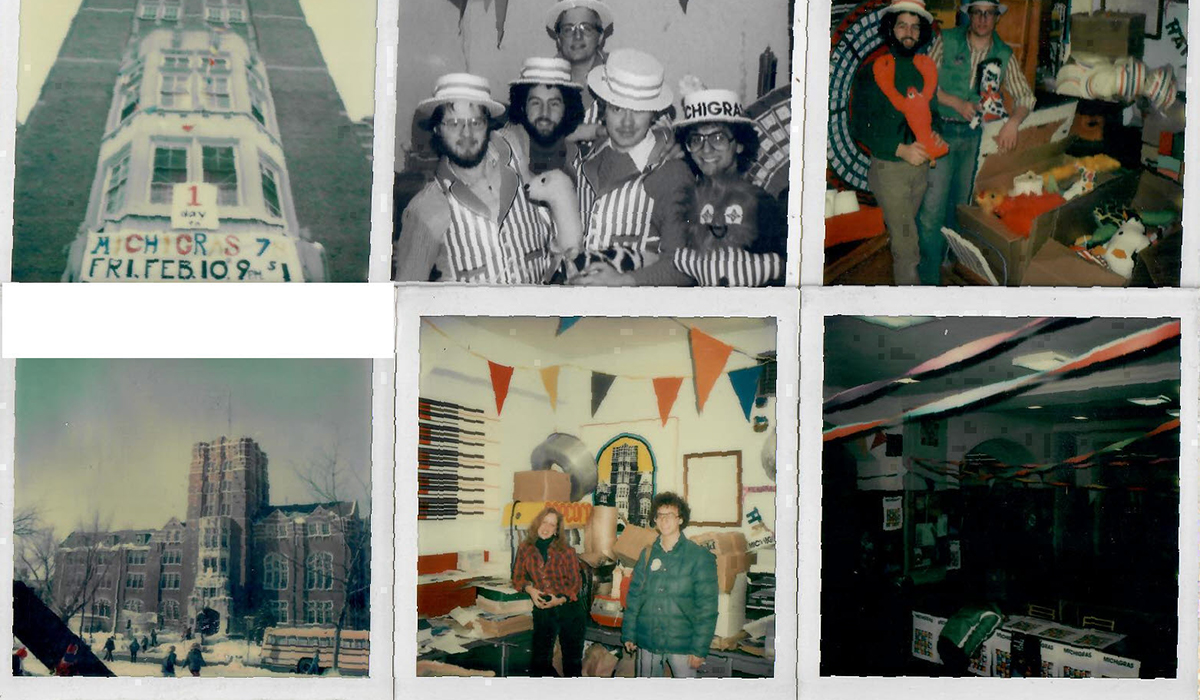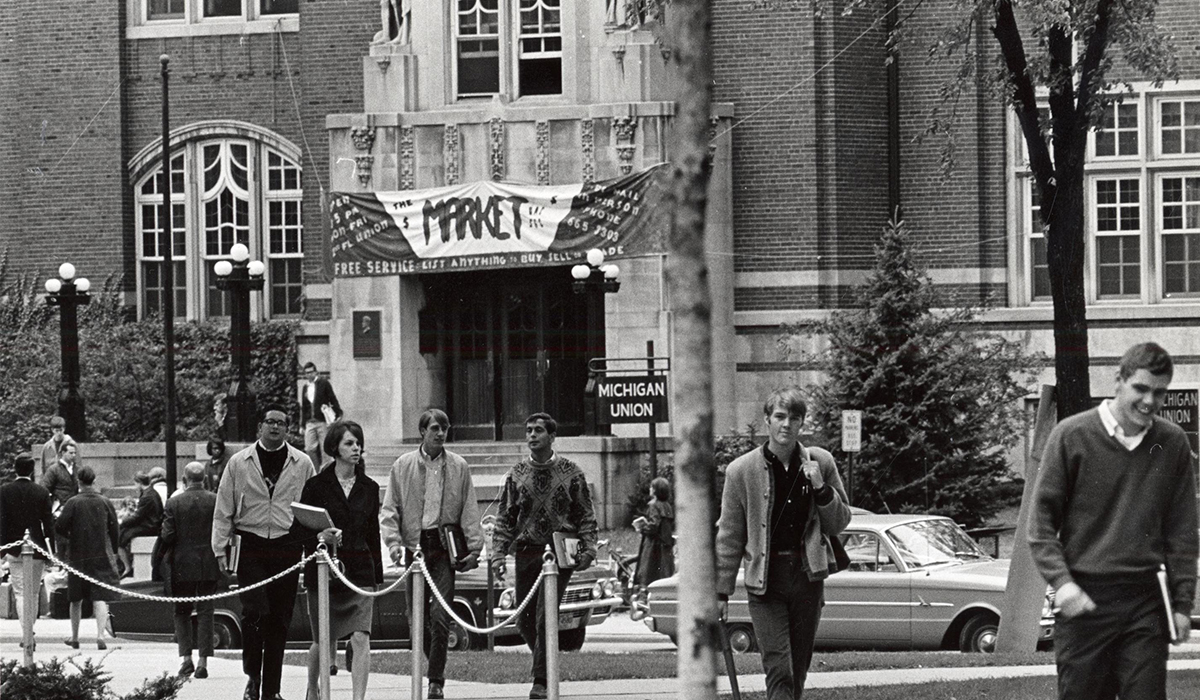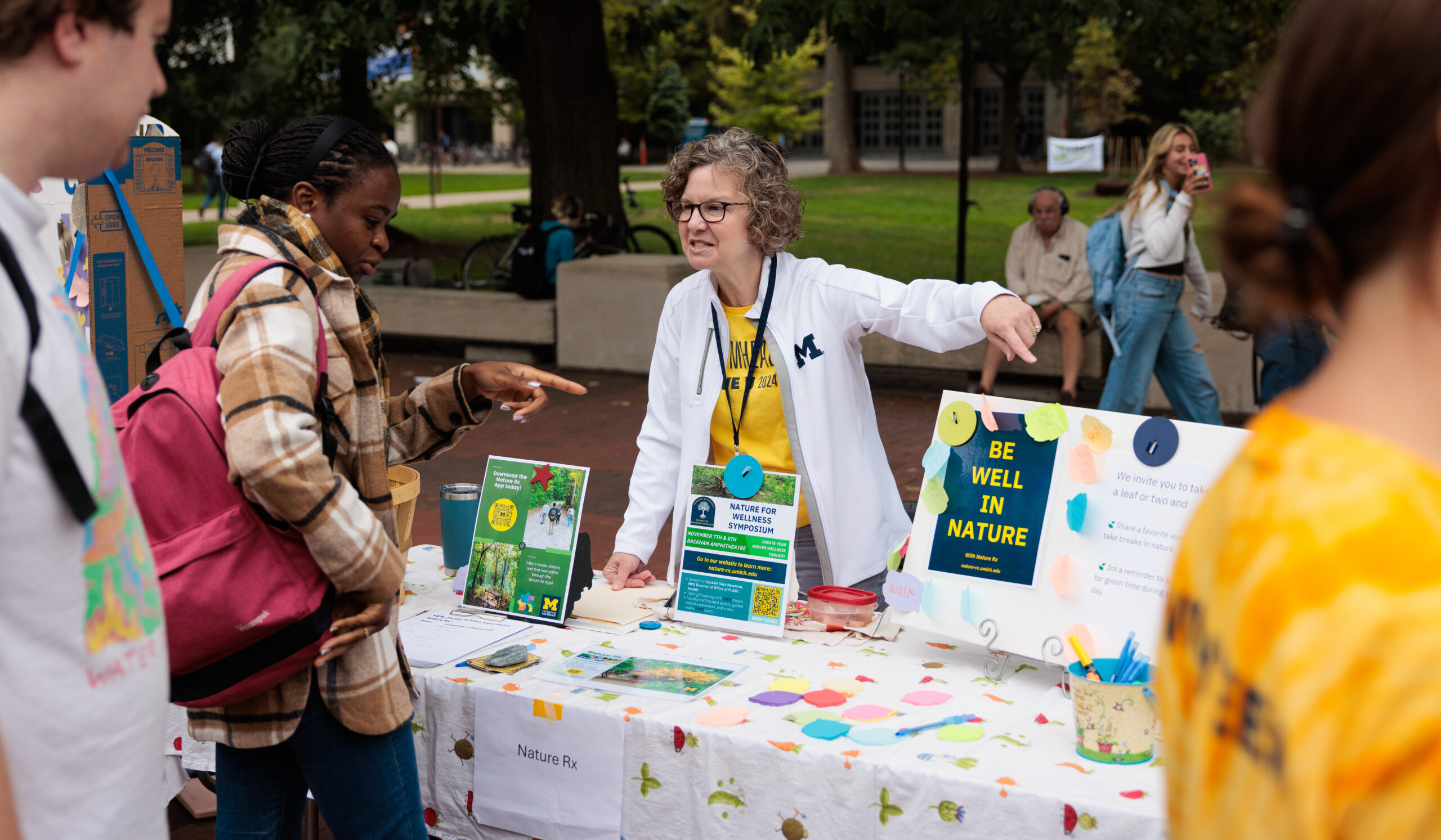The Michigan Union of today reliably buzzes with students enjoying its accommodations, activities, meeting and study spaces, and offices. But the Union scene was very different in the 1970s. A lack of facilities and services for students led to many on campus never even venturing into the building—which in turn left many unaware of a potential major resource.
According to an Oct. 18, 1977, article in The Michigan Daily, the once-popular gathering place had fallen into relative disuse. “Once considered the model for campus meeting spaces, the Union has been called ‘a gentleman’s club’ instead of a ‘winter Diag,’ in the words of a current student leader.”
Student efforts, however, resulted in a $4.6 million renovation project for the Union, completed in 1982. It was the last major renovation to the building before the $86.6 million “Re-Union” project in 2020.
Michigan Alum corresponded with alumni who helped breathe new life into the building.
Roy More, ’79, MSE’81
A leader of Alpha Phi Omega (APO) service fraternity, Michigan Student Assembly (MSA), and the University Activities Center (UAC) at various points and, later, the Alumni Association
From the walking tour of my orientation, I remember the guide pointing out the Union. She mentioned MSA and UAC, and maybe the University Cellar bookstore, but that was it and we did not go in. Actually, if it hadn’t been for the U Cellar, I’m not sure if many students would have gone into the building. There were no study lounges, no Campus Information Center, no coffee bar. The ticket center was there, along with the pool hall, but the University Club café was restricted to members and faculty.
Scott Kellman, ’78, JD’80
A student organizations coordinator for, and later president of, MSA
As student organizations coordinator, I was tasked with assigning student organizations office space on campus. This primarily meant the fourth floor of the Union. I quickly became aware that there was a significant shortfall of office space, meeting rooms, theater rehearsal space, and other areas for student organizations. The Union was the obvious place to house a number of these needs.
The Union was a very uninviting place for students at that time. The first floor was dominated by the University Club, empty conference rooms, and the Union Hotel operations.
Steve Carnevale, ’78
UAC president
Tom Easthope, MA’84, the assistant vice president of student services, had talked to us about how the Michigan Union should be a student center. But the catalyst for our interest in the Union was an article I read in the Daily announcing the intent to demolish Waterman Gymnasium. I went to Scott and said “Let’s make this our issue. Let’s go to the regents and tell them not to demolish the gym but make it a student center.”
We requested a time slot at the next regents meeting. Until the moment we entered, the regents were used to student leaders coming in bare feet trying to take over the meetings—and occasionally succeeding. Scott and I dressed up in our three-piece suits and ties, and proceeded to make the equivalent of a corporate PowerPoint presentation on our request to stop the demolition of the gym. The regents were somewhere between stunned and doing cartwheels. We were speaking their language.
Scott devised and implemented a massive student organization assessment of over 400 organizations, what I recall as thousands of pages of research. That created the credibility of the needs of the request. Without going into all the details, the regents decided to knock down Waterman but eventually redirected their focus on the Union itself.
Jeff Lebow, ’80, MSE’81
Member and eventually chair of the UAC Union Programming Committee (UPC)
When I started at U-M in the fall of 1976, I joined UAC, where I met Steve, and APO, where I met Roy. Both organizations were housed in the Union, and I spent a lot of time there. My involvement in both groups showed me firsthand how out-of-touch with students the Union was, and fixing it became my passion for the next five years. The building itself was very “tired,” poorly lit, and not well-maintained—it was even difficult to find enough undamaged chairs for events. But the potential was there for something great, which intrigued me.
Steve Carnevale
I appointed Larry Pulkownik, ’80, head of the UPC. And that unleashed a force the campus had never seen before or since. Larry was a loose cannon and could organize a circus by himself. A whirling dervish of simultaneous constructive and destructive activities all rolled into one. He was well known to all of us and became a close friend by the time he died of cancer in 2001.

Photos courtesy of Jeff Lebow.
Jeff Lebow
The first UPC event was a White Elephant Sale, raising over $4,400 and getting rid of years of Union stuff and junk. We continued to hold events, and each of these were well-attended and raised the Union’s visibility to students, the administration, and the regents.
What came next blew everyone away—the return of Michigras on Feb. 10, 1978. Imagine over 5,000 students packing the Union having fun participating in a variety of activities. Of course, the 35 kegs of free beer helped—until they ran out, and we scrambled to get seven more, which barely lasted until closing at 2 a.m.
Larry Pulkownik
(Quoted in The Michigan Daily, Feb. 12, 1978)
Our objective was not to make a lot of money … . What’s more important is that the party got people into the Union, and they learned that it’s a viable building for students on campus.
Steve Carnevale
It demonstrated to the University leadership that the Union could, should, and must be a student center of campus, not a defunct faculty dining facility. Jeff, Roy, and others were key organizers in more activities. When Scott and I left campus in 1978, they picked up the baton of leadership and continued to finish what we started.
Laurel Tyler, ’80
Vice president of MSA
At MSA, we had the chance to support all the great work that Larry, Jeff, Steve, Roy, Scott, and others were doing to convert it to a student center. By then, the idea had taken hold and students, staff, and alumni were getting excited.
Patricia Lee Refo, ’80, JD’83
Editor-in-chief of the 1980 Michiganensian
It transformed the Union from a building I rarely visited to one that I was in all the time. The project preserved all of the history of the Union while making it a center for students once again. Seeing the Union again full of students restored its lifeblood and returned it to its original purpose.
On a personal level, it was rewarding and exciting to be a small part of an important and significant moment in the life of the University. Those organizations and the Union connected us all together—and still do all these decades later. Pretty wonderful that a building can do that, if you think about it. We learned how to advocate, effect change, mobilize others, and put our ideas and dreams into action in—and through connections built in—the Union.

Photo courtesy of the U-M Bentley Historical Library.
Gregory Lucas-Myers, ’10, is senior assistant editor of Michigan Alum.





